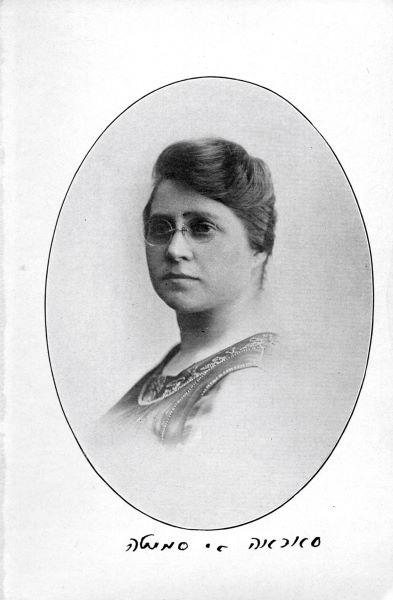Weekly Reader: Treasures From Our Collection
If you’re a regular reader of the Weekly Reader you know that these newsletters are usually arranged thematically, and for good reason. Our collections, both physical and digital, contain a plethora of materials on a vast number of subjects, and our patrons, both in person and online, are often looking for resources on specific areas of interest. Want to know about Yiddish writers in interwar Poland? We’ve got that. Want to know about Yiddish actresses of the nineteenth century? We’ve got that. Want to know about the newest stars on the Yiddish music scene? We’ve got that too. But if you’ve ever had the pleasure of browsing the stacks at a well-resourced university library, you’ll know that the most valuable finds are sometimes serendipitous. You might go in looking for one thing and come out with something completely different. With that in mind, we thought we’d take a break this week from the purely thematic and try to come up with a few of the items that have jumped out at us for reasons all their own. We hope you’ll find them as captivating as we do.
—Ezra Glinter
Strategic Stockpile

The US boasts a stockpile of processed cheese, reported to contain upwards of a billion pounds. The European Union used to have a surplus wine lake. Not to be outdone, the Yiddish Book Center has not one but two book piles. There’s our historical book mountain, collected over forty years (1.5 million volumes and counting). And now, as a result of the coronavirus pandemic, we also have a book mound. It started back in March 2020 with a few boxes. With donations continuing to pour in, and limited staffing to open boxes due to the building’s closure to the public during quarantine, it has now well surpassed three figures.
Read about some of our recent donations
Thriller King

Edgar Wallace (1875—1932) contributed to the screenplay of King Kong and was once the most widely read author in the world. He was born out of wedlock to a touring actress who put him up for adoption due to poverty, and he died at the age of 56 severely in debt from a life of extravagance. But in between he was a printer’s assistant, rubber factory worker, milk roundsman, ship’s cook, soldier, war correspondent, crime reporter, playwright, Hollywood screenwriter, film producer, and speed novelist who pumped out an impressive 170 or so novels and sold over 200 million books. Although Wallace has largely faded into obscurity, he remains preserved in Yiddish translation. The booklet In kenigraykh fun banditizm (In the Kingdom of Banditry) is based on Wallace’s 1929 visit to Chicago, which in the 1920s was a city that made a gruesomely beautiful literary coupling with speed crime writer Wallace.
Read about Edgar Wallace in Yiddish translation
On the Trail of the Salamander

Isaac Bashevis Singer’s first literary venture was lost for almost a century—until a partial copy in a cache of old printers’ proofs turned up in an attic in Bilgoraj, the Polish town where Singer lived as a teenager. The proofs were the biggest clues in a mystery worthy of Bashevis himself—the complete disappearance of Salamandrye (Salamander), the literary journal he edited as a young man. No library in the world has a copy. Not a single one appears to have survived. It is as if the young Singer had devised the perfect vanishing act—a mythical journal named after a creature with supposed supernatural powers.
Read about the hunt for Singer’s Salamander
Who Is Guilty?

In 1919 an outfit called Literature Publishers released Who Is Guilty?, a collection of columns by newspaper reporter Sarah B. Smith, who covered New York City courtrooms. Due to the space constraints of a newspaper column, each story had to be short, and as Dan Setzer, the translator, notes, Smith had to paint her characters with a few deft master strokes to make us see them as whole individuals. Now these gripping columns have become an episodic radiocast from the Yiddish Book Center, read by celebrated actress Eleanor Reissa.
Listen to the Who Is Guilty? radiocast
Remains of Vacationland

Once a thriving vacation spot in the Catskill Mountains, today the Borscht Belt is recalled through the nostalgic lens of summer swims, Saturday night dances, and comedy performances. But its current state, like that of many other formerly glorious regions, is nothing like its earlier status. Forgotten about and exhausted, much of the Borscht Belt's structural environment has been left to decay. For photographer Marisa Scheinfeld, that decay, and the onetime glory it represented, provided a unique visual goldmine. In her pictures she explores abandoned sites in the Catskills where resorts, hotels, and bungalow colonies once flourished.
